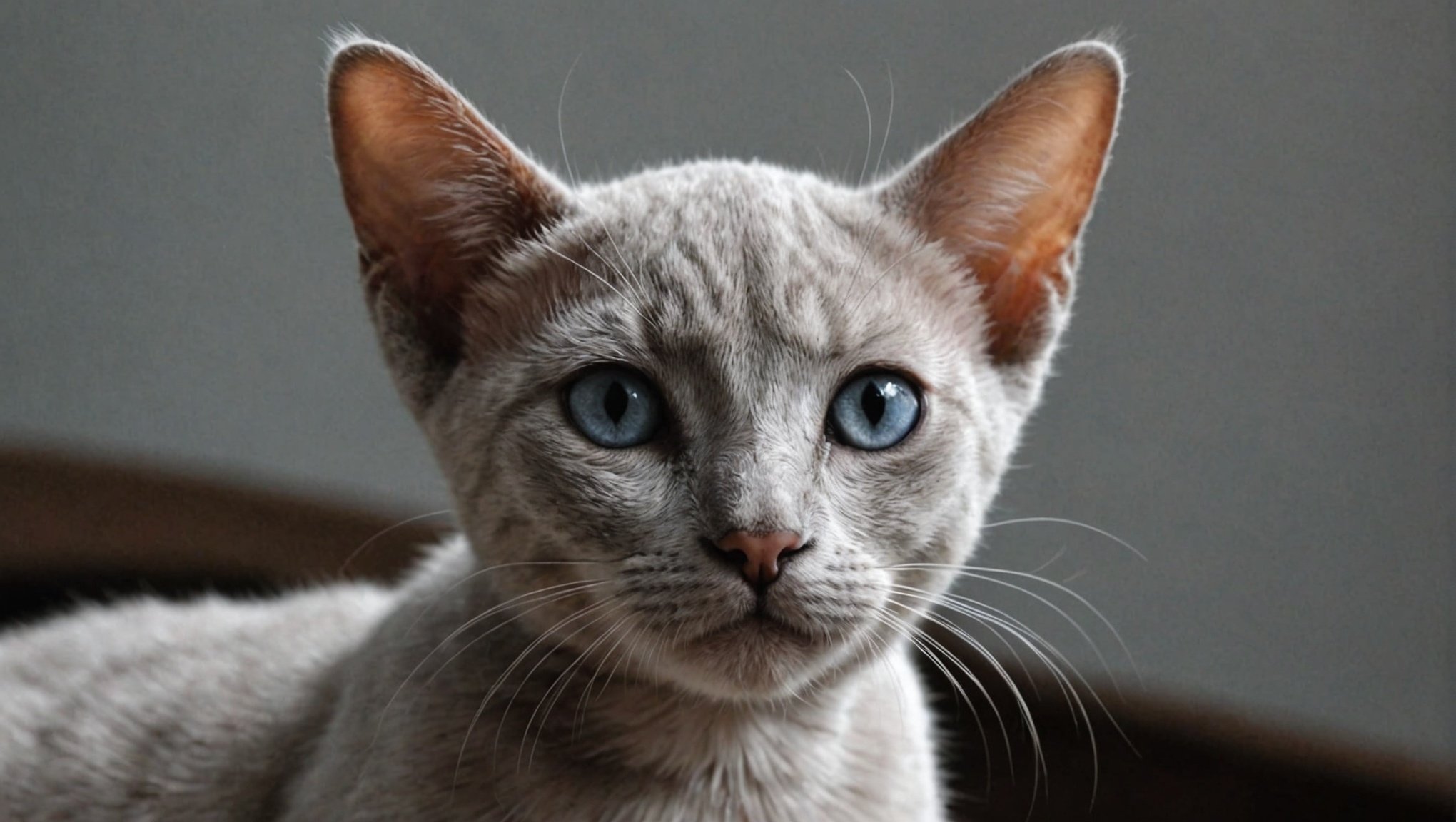Caring for a hairless breed like the Bambino cat requires a unique set of practices tailored to their specific needs. This breed's sensitive skin demands extra attention, from regular bathing to protection against environmental elements. Learn how to create an optimal living environment and establish a care routine that promotes their health and well-being. These essential tips not only ensure your Bambino cat thrives but also help strengthen the bond you share with your beloved companion.
Essential Grooming Practices for Hairless Breeds
Understanding the unique grooming needs of hairless cats is crucial for maintaining their skin health. Unlike their furry counterparts, hairless breeds require regular grooming to prevent skin issues. The absence of fur means their skin is more exposed to environmental factors, making it prone to oil buildup and dirt accumulation.
A découvrir également : Essential Tips for Choosing the Perfect Shelter Cat: Create a Lasting Bond
Importance of Regular Grooming
Regular grooming sessions are essential to keep a hairless cat's skin healthy and free from irritation. These sessions help in removing excess oils and dirt that can lead to skin problems. An effective grooming routine ensures that their skin remains clean and comfortable.
Recommended Grooming Tools and Techniques
Using the right grooming tools is vital. A soft, damp cloth or a gentle sponge is ideal for wiping down the skin. Some owners find that hypoallergenic wipes work well for quick clean-ups. Additionally, a moisturizing lotion formulated for pets can help maintain skin moisture.
A voir aussi : Ultimate Guide to Controlling Shedding in Long-Haired Cats: Top Strategies for Pet Parents
Frequency of Grooming Sessions
The frequency of grooming sessions typically depends on the individual cat's skin condition. However, a general guideline is to groom hairless cats at least once a week. This routine helps in maintaining optimal skin health and prevents potential skin issues from developing.
- Grooming tools: Soft cloth, hypoallergenic wipes
- Techniques: Gentle wiping, moisturizing
- Frequency: At least weekly grooming sessions
Skin Care and Moisturization
Ensuring optimal skin health for hairless cats requires careful attention to their unique needs.
Best Moisturizers for Hairless Breeds
Choosing the right moisturizer is vital for maintaining the delicate skin of hairless breeds. Look for products specifically formulated for pets, as human lotions can contain irritants. Hypoallergenic and fragrance-free options are often the best choice. Regular application helps in maintaining skin hydration and preventing dryness.
Signs of Skin Irritation and How to Address Them
Recognizing skin irritation early is crucial. Common signs include redness, bumps, or excessive scratching. If these symptoms appear, it's important to consult a veterinarian to determine the cause and appropriate treatment. Moisturizers can sometimes alleviate mild irritation, but persistent issues may require medical intervention.
Recommended Bathing Practices and Product Choices
Bathing is another key aspect of skin care for hairless cats. Use a gentle, pet-safe shampoo to avoid stripping natural oils. Bathing should be done every 1-2 weeks, depending on the cat's skin condition. After bathing, thoroughly dry the cat to prevent any moisture-related problems.
- Moisturizers: Pet-specific, hypoallergenic
- Signs of irritation: Redness, bumps, scratching
- Bathing frequency: Every 1-2 weeks
By adhering to these practices, owners can ensure their hairless cats remain comfortable and healthy.
Temperature Sensitivity and Environmental Care
Hairless cats require special attention to their environmental needs.
Understanding Temperature Sensitivity in Hairless Breeds
Hairless cats, due to their lack of fur, are particularly sensitive to temperature changes. This sensitivity means they can easily become too cold or too hot, depending on the environment. Owners should closely monitor indoor temperatures, ensuring they remain within a comfortable range. Ideally, the environment should be kept at a consistent temperature, avoiding drafts and direct sunlight.
Creating a Comfortable Environment for Your Cat
To maintain optimal temperature care, provide your hairless cat with cozy blankets and heated beds, especially during colder months. These items help regulate body temperature and offer a sense of security. In warmer weather, ensure they have access to shaded areas to prevent overheating.
Protective Clothing Options for Outdoor Exposure
When taking your hairless cat outdoors, consider protective clothing options. Lightweight sweaters or jackets can shield them from the cold, while breathable fabrics help in warmer conditions. These clothing items not only provide protection but also add a layer of comfort.
- Temperature sensitivity: Monitor indoor temperatures
- Comfortable environment: Cozy blankets, heated beds
- Protective clothing: Sweaters, jackets
By addressing these aspects, you ensure your hairless cat remains healthy and comfortable in varying environments.
Feeding and Nutrition Guidelines
Essential insights for maintaining the health of hairless cats through proper nutrition.
Importance of a Balanced Diet for Hairless Cats
Providing a balanced diet is crucial for maintaining the overall health of hairless cats. Due to their unique physiology, these cats often have higher metabolic rates, necessitating a diet rich in nutrients. A well-rounded diet supports their skin health and energy levels, which are vital for their wellbeing.
Recommended Dietary Supplements for Skin Health
Incorporating specific dietary supplements can significantly enhance skin health for hairless breeds. Omega-3 and Omega-6 fatty acids are particularly beneficial, as they help maintain skin moisture and elasticity. Additionally, supplements like vitamin E can aid in reducing inflammation and promoting a healthy skin barrier.
Feeding Schedules and Portion Sizes
Establishing a consistent feeding schedule is important for regulating your cat's metabolism and preventing obesity. Typically, dividing meals into smaller, frequent portions ensures adequate nutrient absorption and energy balance.
- Balanced Diet: Rich in nutrients, supports skin health
- Dietary Supplements: Omega fatty acids, vitamin E
- Feeding Schedule: Smaller, frequent portions
By focusing on these aspects, owners can ensure their hairless cats receive the nutrition necessary for a healthy and active lifestyle, ultimately enhancing their quality of life.
Regular Health Check-Ups
Ensuring the well-being of hairless cats through routine veterinary care.
Importance of Routine Veterinary Visits
Regular health check-ups are essential for maintaining the well-being of hairless cats. These visits allow veterinarians to monitor the cat's overall health and address any emerging issues. Routine check-ups can detect potential problems early, ensuring timely interventions.
Common Health Concerns for Hairless Breeds
Hairless cats are prone to specific health concerns due to their unique physiology. Skin conditions, respiratory issues, and dental problems are more prevalent in these breeds. Regular health check-ups help in identifying and managing these concerns effectively.
Vaccination and Preventive Care Recommendations
Vaccinations play a crucial role in preventive health care for hairless cats. Keeping up with vaccination schedules protects them from common feline diseases. Additionally, preventive care measures, such as parasite control and dental hygiene, are vital to their overall health.
- Routine check-ups: Monitor health, early detection
- Health concerns: Skin, respiratory, dental issues
- Preventive care: Vaccinations, parasite control
By prioritizing regular health check-ups, owners can ensure their hairless cats lead healthy lives. This proactive approach in health care not only addresses current issues but also prevents future complications.
Behavioral Considerations and Enrichment
Exploring the unique traits and needs of hairless cat behavior.
Understanding Unique Behaviors of Hairless Breeds
Hairless cats exhibit distinctive behavioral traits that set them apart from their furry counterparts. Due to their lack of fur, they often seek warmth and comfort, making them more inclined to snuggle with their owners. This breed tends to be highly social and enjoys human interaction, often following their owners around the house.
Importance of Mental and Physical Stimulation
Providing adequate mental and physical stimulation is crucial for the well-being of hairless cats. Engaging them in interactive play sessions helps prevent boredom and encourages healthy behaviors. These cats thrive in environments that offer a variety of activities to keep their minds and bodies active.
Recommended Toys and Activities for Enrichment
To cater to the playful nature of hairless cats, consider incorporating a range of enrichment activities into their daily routine. Toys that stimulate their hunting instincts, such as feather wands and laser pointers, are particularly effective. Puzzle feeders and interactive toys also provide mental challenges.
- Interactive play sessions
- Feather wands and laser pointers
- Puzzle feeders
By understanding and addressing the unique hairless cat behavior, owners can provide a stimulating and nurturing environment. This approach ensures their pets remain happy, healthy, and well-adjusted.
Socialization and Interaction
Exploring effective ways to socialize hairless cats with pets and humans.
Tips for Socializing Hairless Breeds with Other Pets
Socializing hairless cats with other pets can be a rewarding experience. Introduce them gradually to new animals in a controlled environment. Start with short, supervised interactions, allowing both pets to become familiar with each other's presence. Use positive reinforcement, such as treats and praise, to encourage calm behavior.
- Gradual introductions
- Supervised interactions
- Positive reinforcement
Importance of Human Interaction and Bonding
Human interaction is crucial for the emotional well-being of hairless cats. These social creatures thrive on companionship and enjoy being part of family activities. Regular bonding sessions, such as gentle petting or playtime, foster a strong connection between the cat and its owner. This interaction helps reduce anxiety and builds trust.
Recognizing Signs of Stress or Discomfort
Understanding the signs of stress in hairless cats is essential for their care. Look for indicators such as hiding, excessive vocalization, or changes in appetite. If these signs appear, create a calm environment and consult a veterinarian if needed. Addressing stress early ensures a happier, healthier pet.
- Hiding
- Excessive vocalization
- Changes in appetite
By focusing on these aspects, owners can ensure their hairless cats are well-adjusted and content in their social environments.
Common Myths About Hairless Cats
Unveiling the truth behind popular misconceptions.
Debunking Common Misconceptions About Hairless Breeds
Hairless cats often face numerous myths that can lead to misunderstandings about their care and behavior. One common misconception is that these cats are completely hypoallergenic. While they lack fur, they still produce allergens like dander, which can cause reactions in sensitive individuals. It's essential to spend time with a hairless cat before adopting to test for any allergic response.
The Truth About Allergies and Shedding
Another prevalent myth is that hairless cats do not shed. Although they don't shed fur, they do experience skin shedding. This means regular grooming is still necessary to manage skin health and cleanliness. Understanding these aspects helps potential owners make informed decisions about living with a hairless cat.
Understanding the Breed’s Unique Needs
Hairless cats have specific needs that differ from other breeds. They require temperature regulation due to their lack of fur, as well as special grooming routines to maintain their skin. Recognizing these unique needs dispels myths and ensures these cats receive the care they deserve.
- Hypoallergenic misconception
- Skin shedding
- Temperature regulation
By addressing these myths, owners can better appreciate and care for their hairless companions, ensuring a harmonious living environment.
Expert Recommendations and Resources
Exploring valuable resources for comprehensive hairless cat care.
Recommended Books and Articles
For those seeking in-depth knowledge on hairless cat care, several books and articles offer valuable insights. "The Naked Truth: Caring for Hairless Cats" is a recommended read, providing detailed guidance on grooming, health, and nutrition. Additionally, articles in veterinary journals often cover the unique needs of hairless breeds, helping owners stay informed about the latest care practices.
Online Forums and Communities
Engaging with online forums and communities can be an excellent way to connect with other hairless cat owners. Platforms like "Hairless Cat Lovers" on social media provide a space for sharing experiences, tips, and advice. These communities offer support and a wealth of practical knowledge, making them invaluable resources for both new and experienced owners.
Professional Groomers Specializing in Hairless Breeds
Consulting with professional groomers who specialize in hairless breeds can enhance your cat's care routine. These experts understand the specific grooming needs of hairless cats and can offer tailored advice on maintaining skin health. Regular visits to a professional groomer ensure your cat receives the best possible care, contributing to their overall well-being.
- Books: "The Naked Truth: Caring for Hairless Cats"
- Communities: "Hairless Cat Lovers"
- Groomers: Specialized in hairless breeds
By utilizing these resources, owners can ensure their hairless cats receive optimal care and attention.
Visual Aids and Infographics
Enhancing understanding through visual resources for cat care.
Importance of Visual Aids in Understanding Care Practices
Visual aids play a crucial role in grasping complex cat care practices. They offer a clear, concise way to communicate essential information, making it easier for owners to implement effective care routines. Infographics and images can simplify intricate grooming techniques, ensuring that cat care is both accessible and manageable.
Suggested Infographics for Quick Reference
Infographics serve as a quick reference guide, providing step-by-step instructions for various cat care tasks. They can illustrate grooming techniques, feeding schedules, and skin care routines, offering a visual roadmap for owners. By using these resources, the often overwhelming aspects of cat care become more approachable and less daunting.
Recommended Video Resources for Grooming Techniques
Videos are another valuable tool, offering dynamic demonstrations of grooming techniques. They allow owners to see the process in action, ensuring they understand each step. High-quality videos can cover everything from bathing to moisturizing, enhancing the overall cat care experience.
- Infographics: Step-by-step guides
- Videos: Dynamic demonstrations
- Visual aids: Simplify complex information
By incorporating visual aids, infographics, and video resources, owners can elevate their cat care practices, ensuring that their pets receive the best possible attention and care.













